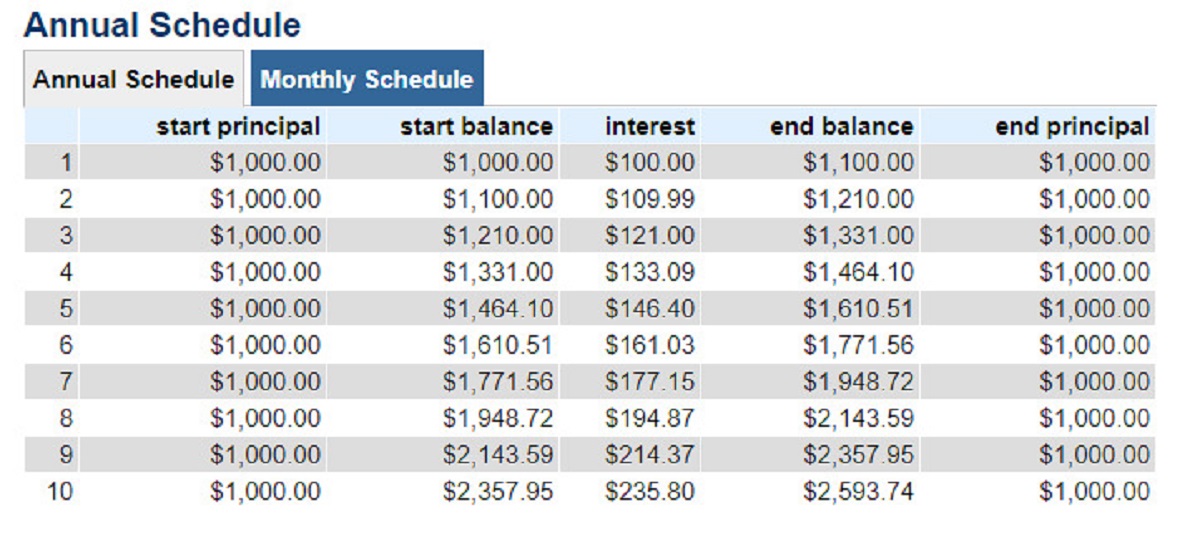Introduction
Welcome to the exciting world of investing, where you have the opportunity to generate a steady stream of monthly income. Whether you’re looking to supplement your current earnings or create a passive income stream for financial freedom, investing can be a powerful tool to achieve your goals.
Investing is all about putting your money to work for you. Instead of letting it sit idle in a savings account, you can make it grow by investing in a variety of assets and strategies. By doing so, you can potentially earn regular income that can cover your expenses, save for the future, or even fund your dream vacations.
However, it’s important to note that investing comes with risks. The value of investments can rise and fall, and there are no guarantees of returns. That being said, with the right knowledge, strategy, and risk management, you can navigate the investment landscape and increase your chances of generating monthly income.
In this article, we will explore various investment opportunities and strategies that can help you create a reliable source of monthly income. From dividend stocks and real estate to bond ladders and peer-to-peer lending, we will delve into different avenues to diversify your investment portfolio and maximize your returns.
Whether you’re a beginner investor looking to get started or an experienced investor seeking to refine your income-generating strategy, this article will provide insights and practical tips to help you on your journey.
So, let’s dive in and discover how you can make monthly income from your investments and take control of your financial future.
Finding and Evaluating Investment Opportunities
Before you can start generating monthly income from your investments, you need to find and evaluate suitable opportunities. Here are some steps to help you in the process:
- Set your investment goals: Determine your financial objectives, whether it’s capital appreciation, regular income, or a combination of both. Having clear goals will guide your investment decisions.
- Research different asset classes: Explore different investment options such as stocks, bonds, real estate, and mutual funds. Understand the risks and potential returns associated with each asset class.
- Stay informed: Keep up with the latest financial news, market trends, and economic indicators. This will help you identify investment opportunities and make informed decisions.
- Utilize online resources: Use online platforms and tools to research and evaluate potential investments. Websites such as Yahoo Finance, Bloomberg, and Seeking Alpha provide valuable information and analysis.
- Analyze financial statements: Study the financial statements, including income statements, balance sheets, and cash flow statements, of companies you’re considering investing in. Look for stable revenue growth, healthy profit margins, and strong cash flows.
- Consider the risk-reward ratio: Assess the potential risks and rewards of an investment. Higher returns usually come with higher risks, so evaluate whether the potential returns justify the level of risk you’re comfortable with.
- Seek guidance from professionals: If you’re unsure about evaluating investment opportunities, consider consulting with a financial advisor or investment professional. They can offer valuable insights and help you make informed decisions.
Remember, the key is to diversify your investment portfolio to spread risk. Allocate your funds across different asset classes and industries, and consider investing in both income-generating assets and assets with long-term growth potential.
By carefully finding and evaluating investment opportunities, you can increase the likelihood of generating monthly income and build a solid foundation for your financial future.
Choosing the Right Investment Strategy
Once you have identified potential investment opportunities, the next step is to choose the right investment strategy. This involves determining your risk tolerance, time horizon, and financial goals. Here are some strategies to consider:
- Long-term growth: If you have a longer time horizon and are comfortable with higher risk, you may consider investing in growth stocks or growth-oriented mutual funds. These investments have the potential for significant capital appreciation over time.
- Income generation: If your primary goal is to generate regular income, consider strategies such as dividend investing, real estate rentals, or creating a bond ladder. These investments are geared towards providing stable cash flow.
- Value investing: This strategy involves seeking out undervalued stocks or assets that have the potential for growth. Value investors look for bargains in the market and invest for the long term.
- Index fund investing: Index funds are passively managed funds that aim to replicate the performance of a specific market index, such as the S&P 500. They offer broad market exposure and can be a good option for investors looking for diversification and lower fees.
- Asset allocation: Diversifying your portfolio across different asset classes, such as stocks, bonds, and real estate, can help reduce risk. Determine the optimal mix of assets based on your risk tolerance and investment goals.
- Systematic investment: Also known as dollar-cost averaging, this strategy involves investing a fixed amount at regular intervals, regardless of market conditions. This approach can help reduce the impact of market volatility and allow you to buy more shares when prices are low.
Remember, there is no one-size-fits-all strategy. The right investment strategy for you will depend on your individual circumstances and objectives. It’s important to regularly review and adjust your strategy as needed to stay aligned with your goals.
Additionally, it’s crucial to have realistic expectations and be patient with your investments. It may take time for your chosen strategy to bear fruit and generate the desired monthly income. Stay focused, stay disciplined, and evaluate your investments periodically to ensure they continue to align with your objectives.
By selecting the right investment strategy, you can increase the likelihood of achieving your financial goals and consistently generating monthly income.
Diversifying Your Investment Portfolio
One of the key principles of successful investing is diversification. Diversifying your investment portfolio means spreading your investments across different asset classes, industries, and geographic regions. Here’s why diversification is important:
Risk reduction: By diversifying, you reduce the risk of relying too heavily on a single investment. If one investment performs poorly, others in your portfolio may offset or minimize the losses.
Capital preservation: Diversification can help protect your capital by mitigating the impact of market volatility. When one asset class experiences a downturn, another may perform well, helping to balance out your overall portfolio performance.
Opportunity for growth: Investing in a variety of assets can provide exposure to different growth opportunities. Some sectors or industries may outperform others in certain economic conditions, and by diversifying, you increase your chances of capturing the upside potential.
Income stability: Diversification can also help stabilize your monthly income streams. By including income-generating assets such as dividend stocks, real estate rentals, and bond ladders in your portfolio, you can achieve a consistent flow of cash regardless of market fluctuations.
It’s important to note that diversification doesn’t guarantee profits or protect against losses, but it is a strategy that can help manage risk while potentially enhancing returns over the long term. Here are some tips for diversifying your investment portfolio:
- Asset allocation: Allocate your investments across different asset classes such as stocks, bonds, real estate, and cash equivalents.
- Geographic diversification: Consider investing in both domestic and international markets to benefit from global economic trends and reduce exposure to regional risks.
- Sector diversification: Invest in a range of industries or sectors to reduce the impact of sector-specific risks. For example, a downturn in the technology sector may be balanced out by a more positive performance in the healthcare sector.
- Size diversification: Include investments in companies of different market capitalizations, such as large-cap, mid-cap, and small-cap stocks. This can provide exposure to different growth opportunities and risk profiles.
- Periodic review: Regularly review your portfolio and rebalance if necessary. Over time, certain investments may outperform others, causing your portfolio’s asset allocation to shift. Rebalancing ensures that your portfolio stays diversified according to your original investment plan.
By diversifying your investment portfolio, you can reduce risk, increase the potential for growth, and enhance the stability of your monthly income streams. It’s a strategy that can help you navigate the ups and downs of the investment landscape and achieve long-term financial success.
Generating Passive Income from Dividend Stocks
Dividend stocks are an attractive option for investors looking to generate passive income. These are stocks of companies that distribute a portion of their earnings to shareholders on a regular basis. Here’s how you can generate passive income from dividend stocks:
Selecting dividend-paying stocks: Look for companies with a history of consistent dividend payments. Focus on companies that have a track record of increasing their dividends over time, as this demonstrates their ability to generate sustainable income.
Dividend yield: Consider the dividend yield, which indicates the annual dividend payment as a percentage of the stock’s current price. A higher dividend yield generally indicates a higher potential income stream, but be cautious of excessively high yields, as it may be a sign of an unsustainable dividend.
Reinvesting dividends: Consider reinvesting the dividends you receive back into the same or different dividend stocks. This process, known as dividend reinvestment, allows you to purchase additional shares and compound your returns over time.
Dividend aristocrats: Dividend aristocrats are companies that have consistently increased their dividends for at least 25 consecutive years. Investing in dividend aristocrats can provide a potential source of stable and growing income for the long term.
Dividend-focused funds: Investing in dividend-focused mutual funds or exchange-traded funds (ETFs) can provide diversification across multiple dividend-paying companies. These funds select stocks based on their dividend-paying history and can be a convenient way to gain exposure to a wide range of dividend stocks.
Tax considerations: Be aware of the tax implications of dividend income. In some jurisdictions, dividends may be subject to different tax rates than regular income. Consult with a tax professional to understand the specific tax rules in your country or region.
Generating passive income from dividend stocks requires a long-term investment approach. By purchasing shares of dividend-paying companies and holding onto them, you can benefit from consistent income streams. Many investors view dividend stocks as a reliable source of passive income, as they provide both income and the potential for capital appreciation.
However, it’s important to note that dividend payments are not guaranteed. While many reputable companies strive to maintain or increase their dividends, economic downturns or specific company circumstances can lead to dividend reductions or suspensions. Conduct thorough research and consider the overall financial health and stability of the companies you invest in.
With careful selection and monitoring of dividend stocks, you have the potential to generate a reliable stream of passive income that can help you achieve your financial goals.
Investing in Real Estate for Monthly Cash Flow
Real estate investment is a popular avenue for generating monthly cash flow. By owning and renting out properties, you can benefit from both rental income and potential property value appreciation. Here are some key points to consider when investing in real estate for monthly cash flow:
Choosing the right property: Look for properties in desirable locations with strong rental demand. Consider factors such as proximity to amenities, transportation, schools, and job opportunities. Research the local rental market to determine achievable rental rates.
Positive cash flow: Aim to invest in properties that generate positive cash flow, meaning the rental income exceeds the expenses associated with owning the property, such as mortgage payments, property taxes, insurance, and maintenance costs.
Financing options: Explore different financing options, such as traditional mortgages, private loans, or utilizing your own capital. Evaluate the terms and interest rates to ensure they align with your investment strategy and cash flow goals.
Property management: Decide whether you want to manage the property yourself or hire a professional property management company. Property management can alleviate the responsibilities of tenant screenings, maintenance, and rent collection, but it comes with associated fees.
Long-term appreciation: While the focus is on generating monthly cash flow, real estate investments can also appreciate in value over time. Consider the long-term potential of the property’s appreciation when making investment decisions.
Tax advantages: Real estate investments offer various tax advantages, including deductions for mortgage interest, property taxes, repairs, and depreciation. Consult with a tax professional for guidance on maximizing these tax benefits.
Risk management: Real estate investments come with risks, such as property damage, vacancies, and changes in the local rental market. Mitigate these risks by conducting thorough due diligence, setting aside a contingency fund, and having appropriate insurance coverage.
Investing in real estate for monthly cash flow requires careful analysis, research, and management. It can provide a consistent income stream that is not closely tied to the ups and downs of the stock market. However, it’s important to recognize that real estate investments involve active involvement and ongoing maintenance.
Consider your personal investment goals, risk tolerance, and available resources before venturing into real estate. Seek guidance from experienced real estate professionals to navigate the market and make informed decisions.
With the right approach and due diligence, investing in real estate can be a lucrative strategy for generating monthly cash flow and building long-term wealth.
Creating Bond Ladders for Stable Income
Bond laddering is a strategy that can provide a stable income stream over time. With a bond ladder, you invest in a series of bonds with staggered maturity dates, ensuring a regular influx of income. Here’s how you can create a bond ladder for stable income:
Determine your investment horizon: Consider how long you want to maintain your bond ladder. The length of your investment horizon will determine the number of bonds and their maturities.
Select bonds with staggered maturities: In a bond ladder, you purchase bonds with different maturity dates. For example, if you have a five-year investment horizon, you may buy bonds with staggered maturities of one, two, three, four, and five years.
Diversify your bond portfolio: Invest in a mix of different bond types to spread risk. This can include government bonds, municipal bonds, corporate bonds, and treasury bonds. Each type of bond carries its own risk profile and potential return.
Research and analyze bond credit ratings: Evaluate the credit ratings of the bonds you plan to purchase. Higher-rated bonds typically offer lower yields but come with lower default risks. Lower-rated bonds may have higher yields but carry greater default risk.
Manage bond maturities and reinvestment: As each bond in your ladder matures, you have the option to reinvest the principal into a new bond with a maturity matching your investment horizon. This allows you to maintain your income stream while adapting to changes in interest rates.
Consider callable bonds: Callable bonds give the issuer the right to redeem the bond before its maturity date. When creating a bond ladder, you may choose to include both callable and non-callable bonds. Callable bonds often provide higher yields but carry the risk of being redeemed earlier.
Monitor and adjust your bond ladder: Regularly review and adjust your bond ladder as market conditions change. This may involve selling bonds, purchasing new ones, or adjusting the maturities to align with your income needs and interest rate environment.
Creating a bond ladder can provide you with a predictable and stable income stream. As each bond matures, you receive principal back along with regular interest payments. This strategy helps mitigate the risk of interest rate fluctuations and provides a reliable source of income.
It’s important to note that bond investing carries inherent risks, including changes in interest rates and the creditworthiness of the bond issuers. Conduct thorough research and consider your risk tolerance before building a bond ladder. Consult with a financial advisor if needed to ensure the strategy aligns with your investment goals.
By creating a well-structured bond ladder, you can enjoy stable income throughout the investment horizon and potentially achieve your financial objectives.
Exploring Peer-to-Peer Lending Platforms
Peer-to-peer (P2P) lending platforms provide an alternative investment option that can generate monthly income. These platforms connect borrowers directly with lenders, cutting out traditional financial institutions. Here’s what you need to know when exploring peer-to-peer lending for stable income:
Understanding P2P lending: P2P lending platforms act as intermediaries, matching borrowers seeking loans with individual lenders. As a lender, you can lend money to borrowers and earn interest on your investments.
Diversify your lending portfolio: To minimize risk, spread your investments across multiple loans. Invest in a variety of borrower profiles, loan types, and risk categories. Diversification helps reduce the impact of any single default on your overall portfolio.
Assess borrower creditworthiness: P2P platforms provide information about borrowers, including their credit ratings, loan purpose, and financial history. Evaluate this information to gauge the risk associated with lending to each borrower.
Set lending criteria: Determine your lending preferences, such as loan duration, interest rate, and lending amount. P2P lending platforms often allow you to set your own lending criteria to match your risk appetite and investment goals.
Reinvestment and compounding: As borrowers repay their loans, you can reinvest the principal and interest earned into new loans. This allows you to compound your returns and potentially increase your monthly income over time.
Manage risk with diversification: Investing in a large number of loans can help mitigate the risk of defaults. Ensure that no single loan represents a significant portion of your investment portfolio, reducing the impact of individual defaults on your overall returns.
Research platform reputation and track record: Choose reputable P2P lending platforms with a proven track record. Look for platforms that have transparent lending practices, solid due diligence procedures, and investor protection mechanisms.
Assess platform fees and charges: Understand the fees charged by the P2P lending platform, including lending fees and any management fees. Consider these costs when evaluating the potential returns on your investments.
While P2P lending provides an opportunity for earning monthly income, it is important to recognize that there are risks involved. Defaults on loans can impact your returns, and there may be lags in receiving repayments. Conduct thorough research, assess your risk tolerance, and diversify your lending portfolio to help mitigate these risks.
Peer-to-peer lending can provide an alternative investment avenue for generating stable monthly income. By investing in a diversified portfolio of loans and managing risk effectively, you have the potential to earn consistent returns and achieve your financial goals.
Creating and Selling Information Products
In today’s digital age, creating and selling information products has become a popular way to generate monthly income. An information product is any digital content that provides valuable knowledge or solves a specific problem. Here’s how you can create and sell information products:
Identify your expertise: Determine your areas of expertise or knowledge that can benefit others. This can be anything from personal finance and health to technology or personal development.
Choose the format: Decide on the format that best suits your content. Information products can take various forms, such as e-books, online courses, video tutorials, webinars, podcasts, or membership sites.
Create valuable content: Develop high-quality content that offers value to your target audience. This can include in-depth guides, step-by-step tutorials, case studies, or practical advice. Focus on providing actionable information that helps your customers achieve their goals.
Design and package your product: Present your content in an appealing and user-friendly manner. Invest time and effort into designing professional-looking e-books, creating engaging videos, or developing interactive online courses.
Determine the pricing strategy: Set a price for your information product based on factors such as the value it provides, market demand, and competition. Consider offering multiple pricing tiers or bundles to cater to different customer segments and increase your revenue potential.
Create a sales funnel: Build a sales funnel that takes potential customers through a series of steps, such as email opt-ins, lead magnets, upsells, and follow-up sequences. This helps convert prospects into paying customers and maximizes your sales opportunities.
Market and promote your product: Develop a marketing strategy to reach your target audience. Utilize social media platforms, content marketing, email marketing, and affiliate partnerships to spread the word about your information product. Engage with your audience, offer valuable insights, and build relationships to drive sales.
Provide excellent customer support: Ensure that your customers have a positive experience with your information product. Offer prompt customer support, address their concerns, and constantly look for ways to improve your product based on feedback.
Continuously update and improve: Keep your content up to date and relevant. Monitor industry trends, gather feedback from your customers, and make necessary updates to enhance the value and appeal of your information product.
Creating and selling information products requires effort, time, and dedication, but it can be a rewarding endeavor. With the right content, marketing strategy, and commitment to delivering value, you can generate a consistent monthly income stream while helping others achieve their goals.
Remember to protect your intellectual property and consider using secure platforms or DRM (Digital Rights Management) solutions to prevent unauthorized distribution or sharing of your information products.
Renting Out Assets for Regular Payments
Renting out assets is a great way to generate regular monthly income by leveraging the things you own. Whether it’s property, vehicles, equipment, or even household items, renting out assets can provide a steady stream of payments. Here’s how you can make it work:
Identify rentable assets: Take inventory of the assets you own that have rental potential. This can include residential or commercial properties, cars, boats, equipment, storage spaces, or even high-demand items like cameras or party supplies.
Set competitive rental rates: Research the rental market to determine appropriate rates for your assets. Consider factors such as location, condition, demand, and competition. Aim to set rates that are competitive yet profitable for you.
Create appealing listings: When renting out assets, create compelling listings that highlight the features, benefits, and unique selling points of your assets. Include clear and high-quality photos, accurate descriptions, and any additional amenities that can attract potential renters.
Market your assets: Advertise your assets through various channels to reach a wider audience. Utilize online platforms such as rental websites, social media, and local classifieds. Leverage word-of-mouth by asking friends, family, and existing tenants to spread the word about your rental offerings.
Screen and select tenants: Develop a tenant screening process to ensure you select reliable and responsible renters. Conduct background checks, verify references, and have a thorough rental application process in place. Assess prospective tenants based on their rental history, creditworthiness, and ability to fulfill their financial commitments.
Create rental agreements: Draft clear and comprehensive rental agreements that outline the terms, duration, payment schedules, and any additional rules or obligations. Consult with a legal professional to ensure your contracts are legally binding and protect your interests.
Maintain regular communication: Foster good relationships with your tenants by maintaining open and clear communication. Address any concerns or issues promptly and professionally. Regularly inspect your assets to ensure they are well-maintained and identify any necessary repairs or upgrades.
Collect payments in a timely manner: Be diligent about collecting rental payments on schedule. Clearly communicate your preferred payment methods and provide convenient options for your tenants. Consider using online payment platforms to streamline the payment process and minimize delays.
Consider property management services: If managing your rental assets becomes overwhelming or time-consuming, you may choose to hire a property management company. They can handle tenant screenings, rent collection, property maintenance, and other administrative tasks for a fee.
Renting out assets allows you to turn your possessions into income-generating opportunities. It provides a steady flow of monthly payments and can be a relatively passive income stream, especially when managed effectively.
However, it’s essential to understand the laws and regulations surrounding rental properties in your area. Familiarize yourself with landlord-tenant rights and responsibilities, local rental market trends, and any necessary permits or licenses required for certain types of assets.
With proper planning, management, and attention to detail, renting out assets can be a lucrative venture that provides consistent monthly income while utilizing the assets you already own.
Building and Monetizing a Blog or Website
Building and monetizing a blog or website can be an effective way to generate regular monthly income while pursuing your passion. With the right approach, content creation, and monetization strategies, you can turn your online platform into a profitable venture. Here’s how to get started:
Choose a niche: Select a specific topic or niche that aligns with your interests, expertise, and target audience. Focusing on a niche allows you to establish yourself as an authority in that area and attract a dedicated following.
Create valuable content: Write high-quality, informative, and engaging content that provides value to your readers. Offer unique perspectives, practical tips, and actionable advice. Consistently publishing valuable content helps attract and retain an audience.
Optimize for search engines: Utilize search engine optimization (SEO) techniques to improve your website’s visibility in search engine results. Conduct keyword research, optimize your content, and build backlinks to increase organic traffic to your site.
Build a loyal audience: Engage with your readers through comments, social media, and email newsletters. Encourage interactions, respond to comments, and provide personalized experiences to build a community of loyal followers.
Monetization strategies: Explore various monetization strategies to generate income from your blog or website. Some popular options include:
- Advertising: Display relevant ads on your website through advertising networks like Google AdSense or by partnering with brands directly.
- Affiliate marketing: Promote products or services and earn a commission for every sale or referral made through your affiliate links.
- Sponsored content: Collaborate with brands and create sponsored posts or reviews in exchange for compensation.
- Digital products: Create and sell your own digital products, such as e-books, online courses, templates, or digital downloads.
- Membership or subscription: Offer premium content or a membership area with exclusive access for subscribers who pay a recurring fee.
- Consulting or coaching: Leverage your expertise and offer consulting services or one-on-one coaching sessions.
- Events or webinars: Organize virtual events, webinars, or workshops and charge a fee for attendance.
Track and analyze performance: Use analytics tools to track your website’s performance, including traffic, user behavior, and conversion rates. Monitor which monetization strategies are yielding the best results and adjust your approach accordingly.
Continuous improvement: Continuously refine and improve your website’s design, user experience, and content. Stay updated with industry trends, adapt to audience preferences, and evolve your monetization strategies to stay relevant and maximize your income potential.
Building and monetizing a blog or website requires dedication, consistency, and a willingness to adapt. It takes time to establish your online presence and grow your audience, but with persistence and strategic planning, it can become a sustainable source of monthly income.
Remember to comply with applicable laws and regulations, such as disclosing affiliate relationships and adhering to privacy policies. It’s also essential to maintain transparency and ethical practices to build trust among your audience.
By consistently producing valuable content, engaging with your audience, and implementing effective monetization strategies, you can turn your blog or website into a profitable venture that generates regular monthly income while sharing your passion with the world.
Utilizing the Power of Affiliate Marketing
Affiliate marketing is a powerful strategy that allows you to earn money by promoting products or services on your platform. By partnering with brands as an affiliate, you can generate regular monthly income based on commission earnings. Here’s how you can effectively utilize the power of affiliate marketing:
Select reputable affiliate programs: Research and choose affiliate programs that align with your niche and target audience. Look for reputable companies that offer competitive commissions, provide quality products or services, and have a strong track record of affiliate support and timely payouts.
Promote products or services: Select products or services that resonate with your audience’s needs and interests. Be authentic in your recommendations and only promote products you truly believe in. Create compelling content around these products, such as reviews, tutorials, or case studies, to showcase their value and provide valuable insights to your audience.
Display affiliate links appropriately: Incorporate affiliate links naturally within your content. This can be done through text links, banner ads, or product mentions. Make sure your audience is aware that you may earn a commission from the affiliate links you provide by including a disclosure statement or disclaimer.
Optimize for conversions: Experiment with different placement strategies and call-to-action techniques to optimize your affiliate marketing conversions. Test different formats, colors, and design elements to help drive click-throughs and improve your conversion rates. Analyze the performance of your affiliate links and make adjustments accordingly.
Build trust with your audience: Transparency and authenticity are key to successful affiliate marketing. Be honest with your audience about your affiliate partnerships, and provide genuine recommendations based on your own experience or thorough research. Building trust with your audience will lead to higher engagement and increased conversions.
Track and analyze performance: Use affiliate tracking tools and analytics to monitor the performance of your affiliate links. Keep track of clicks, conversions, and earnings to understand which products or strategies are generating the most revenue. This data will help you optimize your affiliate marketing efforts and focus on the most profitable partnerships.
Stay up to date with industry trends: Keep yourself informed about the latest products, trends, and developments in your niche. This will help you identify new opportunities for affiliate partnerships and stay ahead of the curve in providing valuable recommendations to your audience.
Continually optimize and refine: Regularly review and evaluate your affiliate marketing strategy. Analyze conversion rates, update content, and explore new affiliate programs to maximize your earnings. Stay attentive to your audience’s needs and evolve your approach to stay relevant and maintain the trust of your followers.
Affiliate marketing is a flexible and scalable way to generate regular monthly income by monetizing your platform. However, it’s important to strike a balance between promoting affiliate products and maintaining the integrity of your content. Building a loyal and engaged audience should always be the primary focus, and affiliate marketing should complement your valuable content rather than overshadow it.
Remember to comply with applicable laws and regulations, disclose your affiliate relationships, and adhere to the terms and conditions of the affiliate programs you participate in. By effectively utilizing the power of affiliate marketing, you can earn a consistent monthly income while providing valuable recommendations and solutions to your audience.
Building a Portfolio of High-Yield Savings Accounts
Building a portfolio of high-yield savings accounts is a conservative yet effective strategy for generating a consistent monthly income. This approach involves allocating your funds across multiple savings accounts that offer competitive interest rates. Here’s how you can build a portfolio of high-yield savings accounts:
Research and compare savings accounts: Look for banks or financial institutions that offer high-yield savings accounts. Compare interest rates, account fees, minimum deposit requirements, and any additional features or benefits that may enhance your savings experience.
Diversify your savings accounts: Spread your funds across multiple savings accounts to benefit from higher overall interest rates. Consider dividing your savings based on specific purposes, such as emergency funds, short-term goals, or long-term savings.
Consider online banks: Online banks often offer higher interest rates compared to traditional brick-and-mortar banks. Explore reputable online banking options that provide competitive rates while ensuring the safety and security of your deposits.
Automatic contributions: Set up automatic contributions from your primary bank account to your high-yield savings accounts. This ensures regular contributions and helps you build your savings without the need for constant manual transfers.
Monitor and maximize interest rates: Stay up to date with changes in interest rates and take advantage of promotional offers or introductory rates. Periodically review your savings accounts to ensure you’re earning the highest possible interest rates while maintaining the flexibility you need.
Consider laddering your savings: If you have a longer-term savings goal, consider using a savings ladder approach. This involves opening multiple high-yield savings accounts with different maturity dates to take advantage of higher rates offered for longer-term deposits.
Review account terms and conditions: Familiarize yourself with the terms and conditions of each savings account. Pay attention to any fees, withdrawal restrictions, or minimum balance requirements that could impact your savings strategy.
Keep emergency funds accessible: Maintain a portion of your savings in easily accessible accounts for emergency situations. Balance the desire for high yields with the need for liquidity to ensure you can quickly access funds when needed.
Reinvest or diversify your savings: As your savings grow, consider reinvesting the interest earned or exploring additional investment options, such as certificates of deposit (CDs) or other low-risk investment vehicles. This allows you to further enhance your monthly income while keeping your savings secure.
Building a portfolio of high-yield savings accounts provides a reliable source of monthly income with minimal risk. It allows you to grow your savings while maintaining the flexibility and accessibility of your funds. However, it’s important to consider the impact of inflation over time and explore other investment options to ensure your money is keeping pace with the rising costs of living.
Regularly review and optimize your high-yield savings accounts to ensure you’re earning competitive interest rates. Seek opportunities to maximize your savings while maintaining the liquidity and peace of mind that comes with a conservative savings strategy.
By diversifying your savings across high-yield accounts and staying vigilant for the best rates available, you can leverage the power of compounding interest and build a portfolio of savings that generates a steady monthly income.
Conclusion
Generating a monthly income from investments requires careful planning, research, and an understanding of different strategies and opportunities. By exploring various avenues such as dividend stocks, real estate rentals, bond ladders, peer-to-peer lending, information products, asset rentals, blogs or websites, affiliate marketing, and high-yield savings accounts, you can create reliable sources of income.
Each investment option has its own benefits, risks, and considerations, so it’s important to evaluate which strategies align with your financial goals, risk tolerance, and expertise. Diversification is key to managing risk and maximizing returns, ensuring you have a well-balanced investment portfolio.
Building monthly income from investments requires ongoing effort and regular monitoring. It’s crucial to stay informed about market trends, evaluate performance, and adapt strategies to changing circumstances. Additionally, compliance with applicable laws, regulations, and ethical practices is essential in all investment endeavors.
Remember, generating monthly income from investments is a long-term endeavor. Patience and discipline are key as you consistently refine and adjust your investment strategies to align with changing market conditions and your evolving financial goals.
Whether you’re looking to supplement your current income, achieve financial freedom, or fund your future goals, the opportunities are vast. By tapping into the power of various investment strategies and diversifying your portfolio, you can create a consistent monthly income that helps you achieve your financial aspirations.
Happy investing!

























